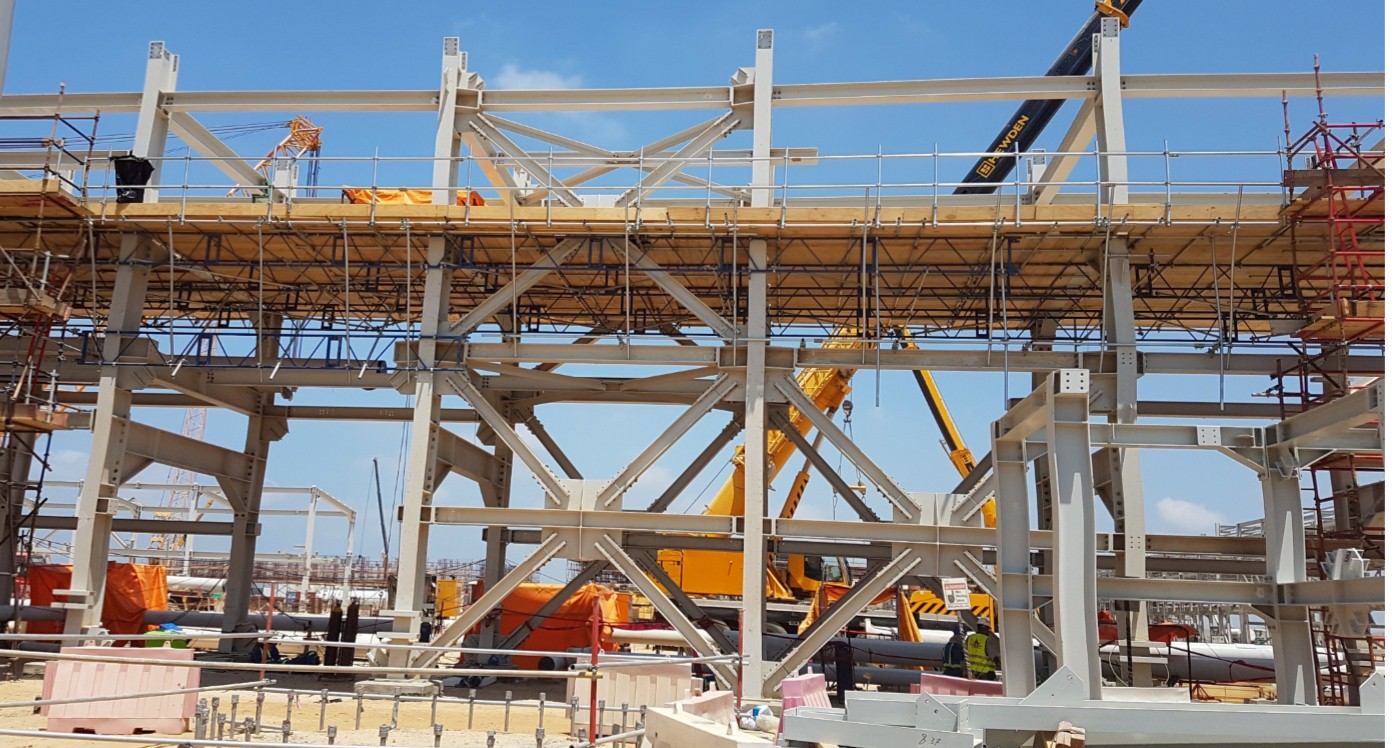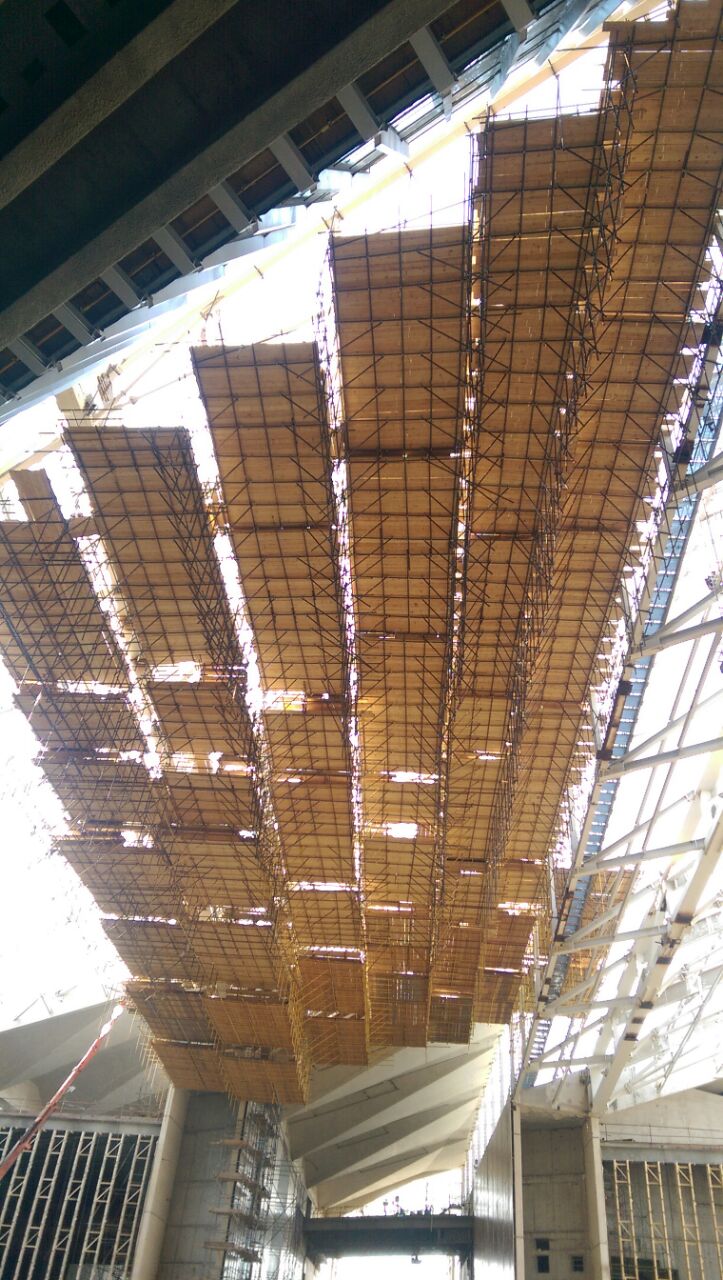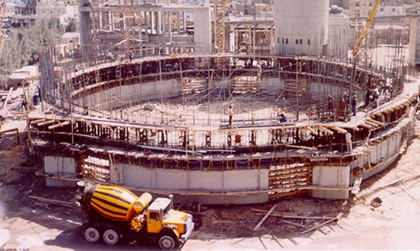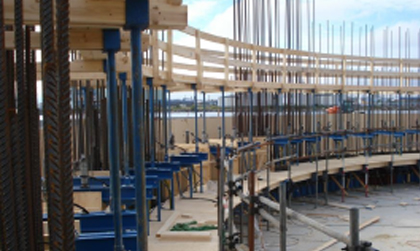- 2016-10-16
Slip-form technique
OVERVIEW
Slip forming is an economical, rapid and accurate form of construction that can be used to build concrete, reinforced concrete, or pre-stressed concrete structures. Although slip forming is not suitable for all types of structures, it can be used to construct a wide variety of structures such as silos, chimneys, building cores, bridge piers, and water towers. Modern slip forming equipment has become so advanced that economics, not technology, dictates its use. Generally, slip forming is only economical on large structures (30 m or taller).
Slip forming consists of constructing a wall-shaped form approximately 1.0 to 1.2 meters high at the base of what is soon to be the structure. The form, however, is not fixed to the ground as it is with traditional forming techniques but is suspended from climbing tubes (also called tie-rods). These climbing tubes are either suspended from a crane to provide support from above or, if the structure is too tall, the tubes are embedded in the already-cast concrete to provide support from below. The form is then filled with fresh concrete. Once the concrete has started to harden, the form is slowly raised by lifting devices. From that point on, the form is continuously raised and fresh concrete is continuously poured into the void created at the top of the form. As the form is raised, it can be adjusted to vary the taper of the structure and the thickness of the wall as needed. The rate at which the form is raised is between 5 and 30 cm/hour. This around the clock operation results in a construction rate between 1.2 and 7.2 m/day, which cannot be attained by any other construction method. The slip form can be stopped if absolutely necessary, but it is not recommended.
In addition to the actual form, a Slip form contains one or two platforms located above the form which are used to support the men and equipment who:
1. Place concrete into the form
2. Insert reinforcing steel
3. Insert timber frames that will leave holes in the wall which can be used for doors, windows, or supports for floor beams. Also, one or two platforms are constructed beneath the form which is used to support the men and equipment who:
1. Supervise concrete quality
2. Correct possible faults
3. Remove timber frames
4. Finish the concrete surface. A slip form will also have a leveling system that ensures that the structure will end up perfectly vertical.
Proudct Advantages:
economical, rapid and accurate form of construction that can be used to build concrete, reinforced concrete, or pre-stressed concrete structures
Relevant Projects
Popular Questions
-
Is slip-form system better than vari-form?
In Circular shafts , silos & chimneys where height is more than 30 m , Slip-form is more suitable and economic
-
What are the typical dimensions of the form panels ?
Height is 120 cm . width 5 cm , 10 cm , 15 cm , 30 cm , 45cm , 60 cm
-
What is the major difference between slip-form and self climbing ?
In slip-form work is continuous 24 hrs/day , In self climbing you can stop whenever you want
-
Phone: (+202) 25255814
Fax: (+202) 25255824
-
9 El-Diplomasien St. , Othman Towers, Nile Courniche , Maadi , Cairo , Egypt.
-
E-mail:
Info@aics-eg.com
About Us
Acrow For Integrated Construction Services (AICS) is a leading Egyptian company in the field of design, renting and erection for Formwork and Scaffolding systems.
Keywords
Latest News
-

-
 Work has started in Grand Egyptian Museum
Work has started in Grand Egyptian Museum- 2016-10-16


